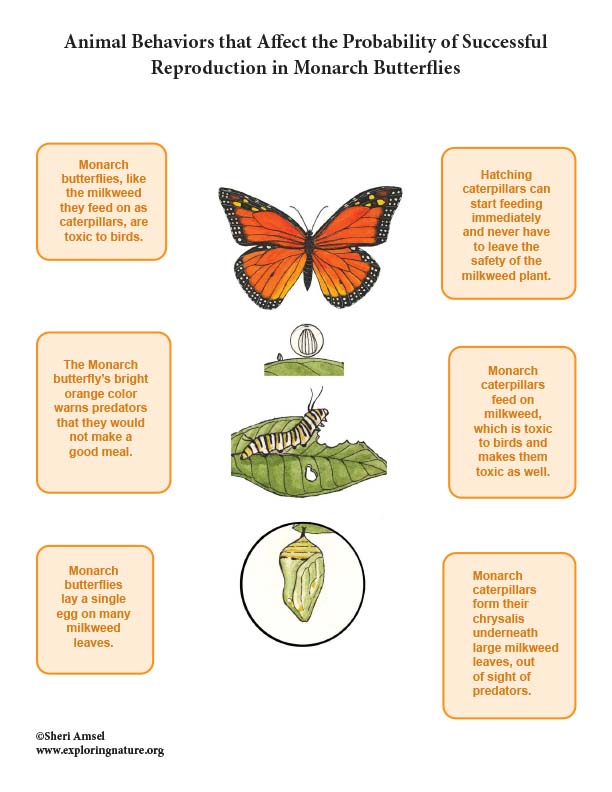

Monarch butterfly caterpillars are one of the only animals that can eat milkweed leaves. Their milky sap is poisonous to most other animals. This has an added advantage of making the adult Monarch butterflies poisonous to predators. Their bright orange color warns off birds that they would not make a good meal. Monarch butterflies lay their eggs on the leaves of milkweeds. When the eggs hatch, the tiny caterpillars (also called larvae) can start to eat the leaves immediately. They grow quickly and develop a black, white, and yellow striped pattern, which advertises the fact that they are also poisonous and not edible to predators. Never leaving the safety of the milkweed plant, the Monarch caterpillars eat and grow and finally reach a size that triggers the final step of their metamorphosis. They form a shiny chrysalis where they will dissolve and reform in to an adult butterfly. This is called pupation. When the adults finally emerge, they mate and lay eggs and the cycle begins again.
Can you think of how each of these characteristic behaviors in Monarch butterflies help increase the odds of reproduction?
Try this Authentic Performance activity to test your knowledge and scientific reasoning.
When you research information you must cite the reference. Citing for websites is different from citing from books, magazines and periodicals. The style of citing shown here is from the MLA Style Citations (Modern Language Association).
When citing a WEBSITE the general format is as follows.
Author Last Name, First Name(s). "Title: Subtitle of Part of Web Page, if appropriate." Title: Subtitle: Section of Page if appropriate. Sponsoring/Publishing Agency, If Given. Additional significant descriptive information. Date of Electronic Publication or other Date, such as Last Updated. Day Month Year of access < URL >.
Amsel, Sheri. "Animal Behaviors that Affect the Probability of Successful Reproduction in Monarch Butterflies (NGSS 6-8 Grade)" Exploring Nature Educational Resource ©2005-2024. December 13, 2024
< http://exploringnature.org/db/view/Animal-Behaviors-that-Affect-the-Probability-of-Successful-Reproduction-in-Monarch-Butterflies-NGSS-6-8-Grade >
